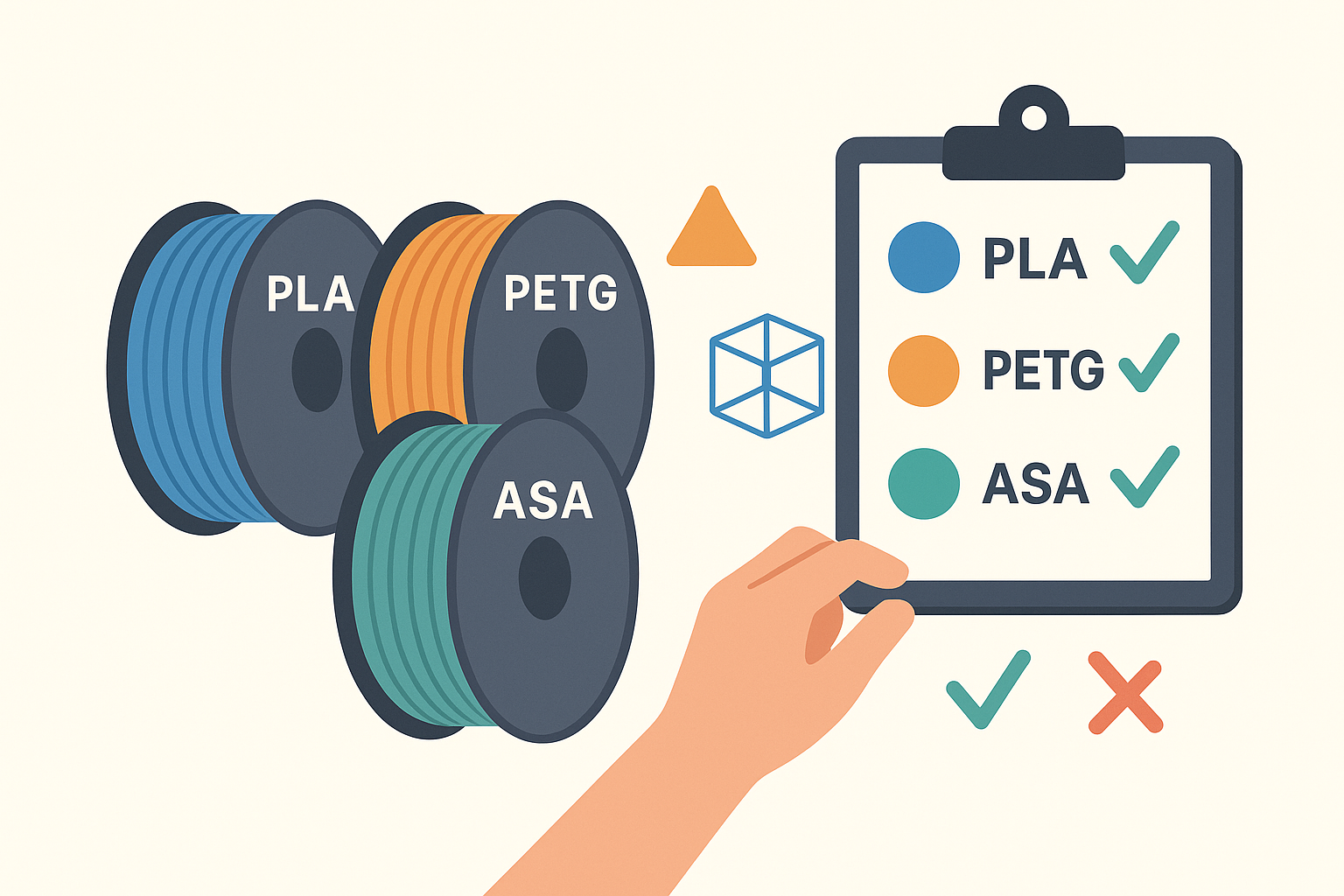Not every plastic suits every project. In this quick guide, we’ll explain how to choose the right material for 3D printing based on strength, weather resistance, or visual quality. Whether you’re printing decor, an automotive part, or a functional prototype – material choice matters.
PLA: easy and affordable for everyday use
PLA (polylactic acid) is the most common filament, perfect for most basic prints:
- Easy to print with minimal warping
- Available in many colors
- More eco-friendly than other plastics
Best for decorations, holders, mockups, and educational models. Not suitable for high heat – softens above 50 °C.
PETG: the best all-rounder
PETG combines PLA's printability with ABS-like strength – a great functional material:
- Resistant to water and chemicals
- Good flexibility and durability
- Suitable for indoor and outdoor use
Ideal for brackets, enclosures, tools, and everyday technical prints.
ASA: for outdoor and UV-exposed parts
ASA is great for anything left in the sun, cold, or rain:
- UV stable – won’t yellow or crack
- Weather and impact resistant
- Used in automotive, electrical, and garden parts
Trickier to print – works best on enclosed printers with proper ventilation.
PC (polycarbonate): extreme strength and temperature resistance
Polycarbonate is one of the strongest 3D printable materials:
- Can withstand up to 110 °C
- Very tough and durable
- Great for mechanical and industrial parts
Requires high nozzle temps and a heated enclosure – not beginner-friendly.
PA (nylon): strong and flexible
PA (polyamide) is light, durable, and excellent for high-stress parts:
- Ideal for gears and wear-resistant elements
- Great tensile strength and slight flexibility
- Absorbs moisture – dry before use
Nylon is perfect for technical and mechanical components that move or slide.
When to go beyond PLA?
If you know what your part needs to endure, choose your material accordingly:
- Indoor prints → PLA or PETG
- Outdoor or automotive use → ASA or PC
- High-load or moving parts → Nylon or PC
We can help you decide – we’ve worked with 10+ types of filament and always aim for the best balance between cost, strength, and quality.
Pro tip: use our online calculator
Try our online calculator to upload your model and instantly see price differences between materials. Or message us for advice.
Conclusion
The choice of material affects your print’s strength, appearance, and longevity. There’s no one-size-fits-all filament – it all depends on the job. Still unsure? Reach out and we’ll recommend the best filament for your needs.
Get a quote or contact us directly.

